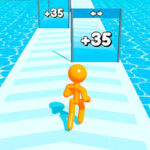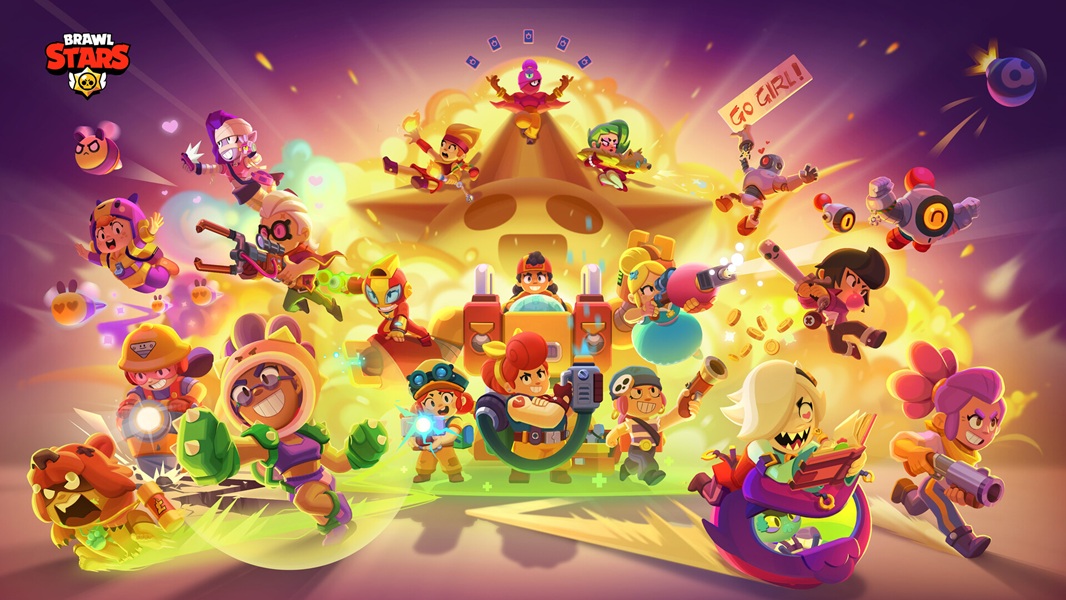Introduction: The Horror of R.E.P.O. and Its Missteps
R.E.P.O., a psychological horror game developed by Semiwork, immerses players in a terrifying, desolate environment. As a protagonist navigating a haunting, mysterious building, players face both physical threats and a deeply unsettling atmosphere. The game creates intense, nerve-wracking moments, but it struggles to maintain horror immersion due to poor pacing and overused jump scares.
While R.E.P.O. succeeds in creating moments of tension, it often leans too heavily on sudden scares rather than building dread over time. This over-reliance on jump scares disrupts the pacing and weakens the overall horror experience. In this review, we will explore how pacing issues and the repetitive use of jump scares reduce the game’s impact, and suggest ways to enhance the player’s immersion and fear.
The Overuse of Jump Scares: A Double-Edged Sword
Jump scares are a classic tool in horror, designed to provoke quick bursts of fear. When used sparingly, they can be highly effective. However, R.E.P.O. often uses them excessively, diluting their impact. The result is a game that feels more like a series of jolting events rather than a slow, nerve-wracking descent into terror.
Desensitization to Fear
The constant barrage of jump scares wears down the player's emotional response. As the game progresses, players start to anticipate the next scare, weakening the element of surprise. Instead of heightening the atmosphere, these sudden moments of shock become predictable. The intended horror effect diminishes over time, and players may begin to feel fatigued rather than frightened.
Lack of Psychological Horror
Instead of relying solely on external scares, R.E.P.O. could delve deeper into psychological horror. By blurring the line between reality and madness, the game could unsettle players on a deeper level. Subtle cues, like warped perceptions or changing environments, would have added an additional layer of tension. Unfortunately, the game’s focus on jump scares limits this potential, making the player’s fear feel surface-level and fleeting.
Pacing: How Poor Timing Ruins Immersion
Pacing is crucial in horror games, and R.E.P.O. struggles to find the right balance between quiet moments and intense sequences. The game shifts too abruptly between quiet exploration and sudden scares, leaving the player with little time to fully absorb the atmosphere.
The Problem with Abrupt Shifts
There are long stretches of calm exploration where the player expects tension to slowly build. However, these quiet moments are often interrupted by an unexpected jump scare or a sudden danger. The lack of gradual buildup prevents a natural rise in tension, and the game feels erratic. When a jump scare happens, it doesn't have the same impact as it would in a more carefully crafted moment of suspense.
Missed Opportunities for Atmosphere Building
Slower moments could have been used to establish a sense of creeping dread. For example, the game could have emphasized environmental storytelling or included subtle sound cues that suggested something was wrong. Instead, these moments often feel empty and underdeveloped. This loss of atmosphere makes it harder for players to stay immersed in the world, as they are jolted from one extreme to the other without a steady buildup of tension.
Psychological Horror: A Missed Opportunity
Psychological horror is a genre where players feel the tension in their mind, not just in their body. R.E.P.O. offers a haunting environment, but it doesn’t fully take advantage of the potential for psychological fear. Instead of creating an oppressive atmosphere where players question their own perceptions, the game often resorts to external threats.
Lack of Mind Games
The game misses opportunities to make the player question what is real. It could have introduced moments where the environment or characters seem to change, creating an unsettling feeling of paranoia. However, R.E.P.O. focuses more on physical threats, such as monsters or sudden dangers, rather than messing with the player's mind. This reliance on external stimuli limits the depth of the horror experience.
Potential for Deeper Fear
Had the game incorporated more mind-bending elements, it could have gone from being just another horror game to a truly disturbing psychological experience. Distorted realities or unreliable narration could have ramped up the tension. These psychological techniques would have kept the player on edge, never sure if what they were experiencing was real or imagined.
Impact on Player Immersion
For a horror game to succeed, it must maintain immersion. The player should feel like they are in danger, surrounded by an oppressive atmosphere that consistently builds fear. Unfortunately, R.E.P.O.’s over-reliance on jump scares and inconsistent pacing disrupts this immersion.
Breaking the Flow
When the game suddenly shifts from quiet exploration to a jump scare, it jolts the player out of the experience. The tension that should be building throughout the game is often interrupted by a loud noise or quick action, which can feel unnatural. This lack of flow makes it harder for the player to become fully immersed in the world.
The Fatigue of Constant Scares
The repetitive nature of jump scares leads to emotional fatigue. Instead of increasing the player’s fear, the game forces them to remain on edge constantly. This unrelenting tension leaves little room for the more subtle, lasting dread that is typically effective in psychological horror. Players can only handle so much before they begin to tune out, which decreases the overall impact of the horror.
The Concept of Co-op in a Horror Game
Co-op modes in horror games are a relatively new but growing trend, offering a fresh take on the genre. In theory, playing a horror game with a friend should add another layer of excitement and tension. R.E.P.O. attempts to incorporate this by allowing two players to explore the desolate environments and face off against terrifying threats together. However, horror is often most effective when experienced alone—where the player feels the weight of isolation and the fear of facing monsters without help. By introducing a co-op feature, R.E.P.O. has to strike a delicate balance between keeping its atmosphere intact and allowing players to work together.
Unfortunately, while the concept has potential, the execution in R.E.P.O. is flawed. The game’s design is heavily reliant on the solitary experience, making the transition to co-op feel somewhat unnatural and detrimental to the atmosphere.
How Co-op Changes the Horror Dynamic
One of the most significant impacts of co-op in a horror game is how it changes the fear dynamic. R.E.P.O. is a game that thrives on a sense of isolation and vulnerability. In a solo setting, the protagonist faces terrifying monsters and strange, oppressive environments alone, heightening the sense of dread. When another player enters the equation, that sense of isolation is immediately diminished.
Loss of Isolation
The primary issue with R.E.P.O.’s co-op mode is that it removes much of the horror’s emotional weight. The game’s horror is rooted in the feeling of being alone in a dangerous, unknown world. When a second player enters the game, the tension dissipates. The fear that arises from being alone in a vast, empty building is diminished when you have another player to rely on. Many of the game's scariest moments, such as narrow escapes or confronting monsters, lose their intensity because the players can team up to overcome obstacles, making the game feel less threatening overall.
Slightly Reduced Atmosphere
The eerie atmosphere that R.E.P.O. is known for becomes less oppressive in co-op mode. In solo play, every creaking door, distant noise, and sudden movement keeps the player on edge. In contrast, when playing cooperatively, those sounds and cues often become less scary because players can share the load. The ominous silence of empty rooms is also somewhat less impactful when another player is present, as the game now feels more like a team-based survival experience than a personal, psychological horror journey.
Improving Pacing: Suggestions for a Better Horror Experience
To fix the pacing and tension issues in R.E.P.O., several adjustments could be made to enhance the overall experience.
Slow Down the Tension Build-Up
R.E.P.O. should introduce more gradual, slow-building tension. Rather than rushing to the next scare, the game could allow the player to become more immersed in the atmosphere. This could include quiet moments where players feel like something is wrong, but they aren’t sure what. These moments would help sustain the feeling of unease and make the eventual scares more effective.
Use Jump Scares Sparingly
Jump scares should be used more sparingly to maintain their effectiveness. Instead of having them frequently throughout the game, they should be saved for key moments, making them more impactful. By giving players time to absorb the atmosphere and build dread, the jump scares will feel earned and unsettling.
Embrace Psychological Horror
Finally, R.E.P.O. could make better use of psychological horror techniques. The game could incorporate unreliable narration, shifting environments, or moments where the player’s perception is questioned. These elements would keep players on edge, unsure of what’s real and what isn’t. By tapping into these deeper forms of horror, the game could deliver a more lasting and unsettling experience.
Conclusion: Striving for a Balanced Horror Experience
In conclusion, while R.E.P.O. by Semiwork offers a strong foundation for a psychological horror game, its pacing and overuse of jump scares ultimately undermine the experience. By focusing too much on sudden shocks and failing to build tension over time, the game reduces the impact of its horror moments. The missed opportunity to explore psychological horror further weakens its overall atmosphere.
To become a truly memorable horror experience, R.E.P.O. should focus on refining its pacing, using jump scares more selectively, and embracing the power of psychological fear. With these adjustments, the game could provide players with a more immersive, lasting experience that leaves them feeling genuinely unsettled long after they’ve put down the controller.



































